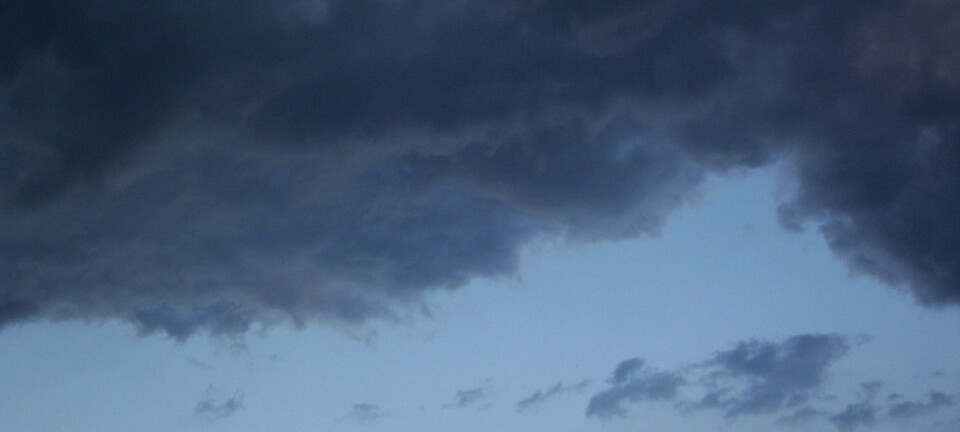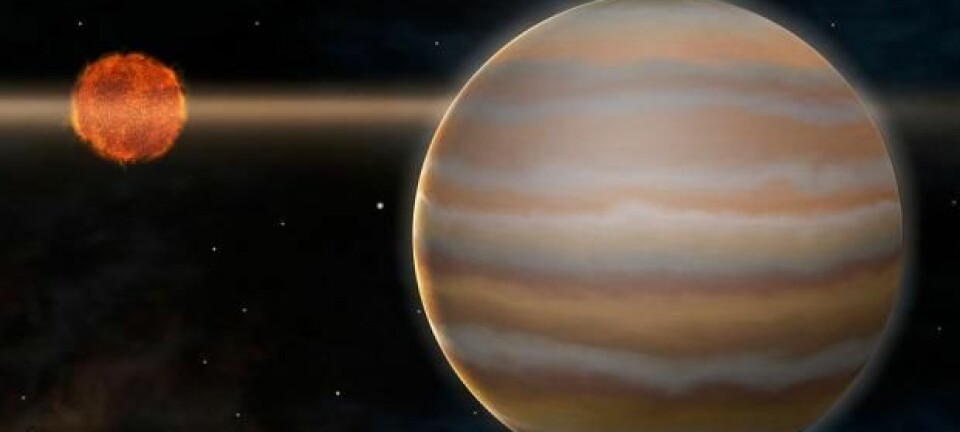
Spacecraft could become autonomous with new Danish technology
New method of navigation for spacecraft and satellites will enable them to determine their position without relying on signals from Earth.
A spacecraft has no trouble determining its position -- as long as it is close to Earth, that is.
All the operators need to do is to transmit a radar signal to the spacecraft and then calculate the spacecraft’s location on the basis of how long the signal takes to return to Earth.
But the further the spacecraft is from the earth, the weaker the radar signals from it become -- and the greater the difficulty researchers have determining its position.
Danish PhD student Andreas Jørgensen has now found a solution to this problem. Instead of transmitting radar signals back and forth between Earth and the spacecraft, he will teach spacecraft to determine their own position.
"This is a really good idea, because right now it cost as much as $100,000 a day to track spacecraft from Earth. This cost can be eliminated using Andreas's method," explains John Leif Jørgensen, Andreas's supervisor and professor at the Department for Measurement and Instrumentation at Denmark's Technical University (DTU).
How the spacecraft finds its location
Jørgensen's new method of spacecraft navigation exploits the fact that we already know the positions of the planets in space.
The idea is that the spacecraft will be able to calculate its own position based on information about where the craft is in relation to the planets.
"The method is all about finding out the direction in which the planets find themselves in relation to the stars. We already know the position of all the planets – NASA has already released that information," explains Andreas Jørgensen.
Size determines the location
The planets are used as reference points which spacecraft can use to determine their own position. It's done like this: a camera on the spacecraft takes a picture of a given planet -- Saturn, for instance. If Saturn is a long way away from the spacecraft its image will be very small, but the closer you get to Saturn the larger the planet will look.
"You can determine how far you are from a planet from what it looks like where you are," says Jørgensen, adding that the distance is calculated by means of geometric formulae.
The technology has an American customer
Knowing how far you are from a planet is not enough, however. Even if you know that the spacecraft is e.g. a thousand kilometers from Saturn, you don’t necessarily know whether it is North, South, East or West of the planet.
So the spacecraft needs to be able to calculate the direction in which the planet lies. To achieve this, Jørgensen uses a second camera on board the spacecraft that focuses on working out where the planet is in relation to the stars.
Based on that knowledge it’s possible to determine the direction from the spacecraft to the planet and you've got the planet's location.
"We've tested the whole thing thoroughly and the method looks extremely promising. We’ve already found an American customer for the module I've developed," says Jørgensen.
Danish method tested by NASA mission
Although Jørgensen's method has not yet been tested from space, the researchers have tested it by taking pictures of the moon from DTU's premises in Lyngby, north of Copenhagen. From the size of the moon and its direction they were able to calculate their own position on Earth.
Apart from this, the researchers at DTU have managed to get the United States space agency NASA to take pictures of the Earth from its space probe Juno -- pictures that were used to test whether it was possible to determine Juno's position using Jørgensen's method.
"It worked really well, apart from the fact the Juno came very close to the Earth -- which meant that the picture quality was far too poor to determine the craft's position accurately enough," says Jørgensen.
Uses existing cameras
Seasoned space enthusiasts will probably have noticed that with its two cameras, dispatching the new method of navigation on a spacecraft could be an extremely weighty -- and expensive -- business.
But as Jørgensen explains, the smart thing about his method is that it makes use of two cameras already found on a good many spacecraft and satellites.
These cameras are used by the spacecraft's stellar compass (see fact box), which provides information as to which direction the spacecraft is pointing relative to space.
According to Jørgensen, other researchers have already tried out other methods of determining the position of a spacecraft, but he's the first to use stellar cameras for the purpose.
"Other researchers have tried to develop similar methods of determining positions in space. But they only used one camera, which they tried to focus on both the stars and the planet,” says Jørgensen. “The problem is that a camera like that is extremely expensive to make because there’s such a huge difference between the light emitted by the planet and the stars. The planet is very bright and the stars are dark so it’s difficult for a camera to focus on both at the same time.”
New method more precise
John Jørgensen believes that the new method will make a far cheaper and more precise alternative to navigating giant radar stations as is currently the practice.
"The method will offer a more precise, safer method of navigation,” he says. “You might compare it to sending a man off on a bike wearing a blindfold and helping him navigate by shouting ‘a bit to the right’ or ‘a bit to the left'.”
The new method, says John Jørgensen, resembles the man having his own eyes to navigate on his own.
Andreas Jørgensen’s new method will be put to the test next year when an American customer sends his technology into space.
Translated by: Hugh Matthews












